Report Suite Configuration
This page explains how to configure your chatbot to stream real-time chat data into an Adobe Analytics report suite.
The first step to connecting Stackchat to Adobe Analytics is to choose an existing report suite for your chat data, or create a new one. Only one Adobe Analytics report suite is necessary across all your bots (although more may be desirable), as they can be filtered by Bot ID.
Adobe Analytics supports up to 75 custom traffic variables and Stackchat can use up many of these if you want to collect every chat event, so creating a new report suite may be desireable if you want to collect maximum chat data. If you were to connect Stackchat to one of your existing Report Suites, you may need to be more economical with the chat data you collect, but you get the benefit of seeing you user's chat behavioral data side-by-side with their website and mobile data.
Every call Stackchat makes to Adobe Analytics has the pageName variable populated with your bot's name, and you can also map your Bot Id to a prop or eVar. This means that you can use the same report suite for all your Stackchat bots, allowing you to run reports that only display data for one bot at a time by splitting your reports based on Bot Id or pageName. Alternatively, you could configure a new report suite for each of your bots, but this is not recommended.
Creating a New Report Suite
First, you will need to create a new Report Suite for your Stackchat data.
Go to Adobe Analytics and log in with your Adobe ID.
From the menu at the top go to Admin > Report Suites.
Click Create New and then Report Suite.
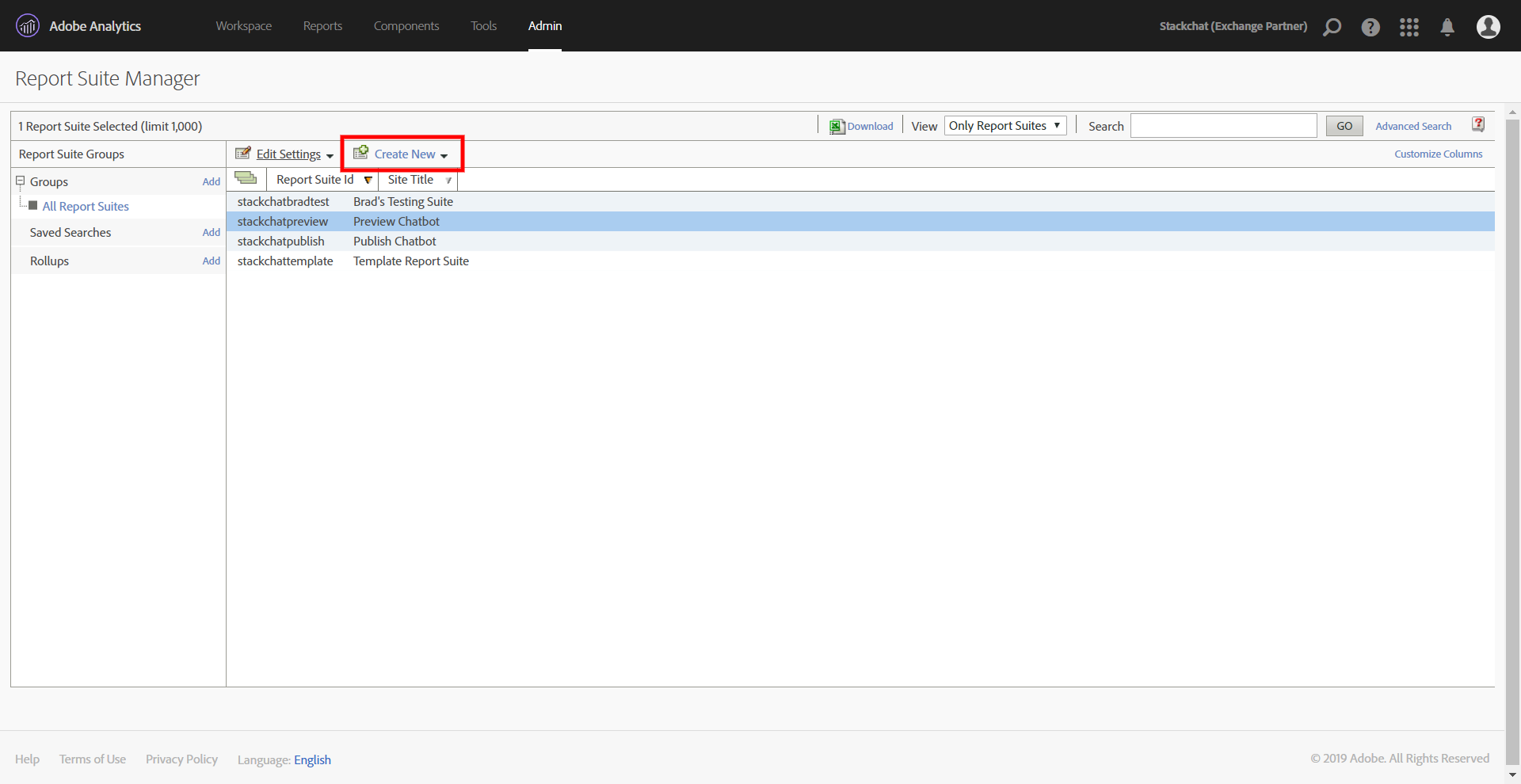
At the Create Report Suite page, fill out all the required fields, starting with the template, for which you can select Default.
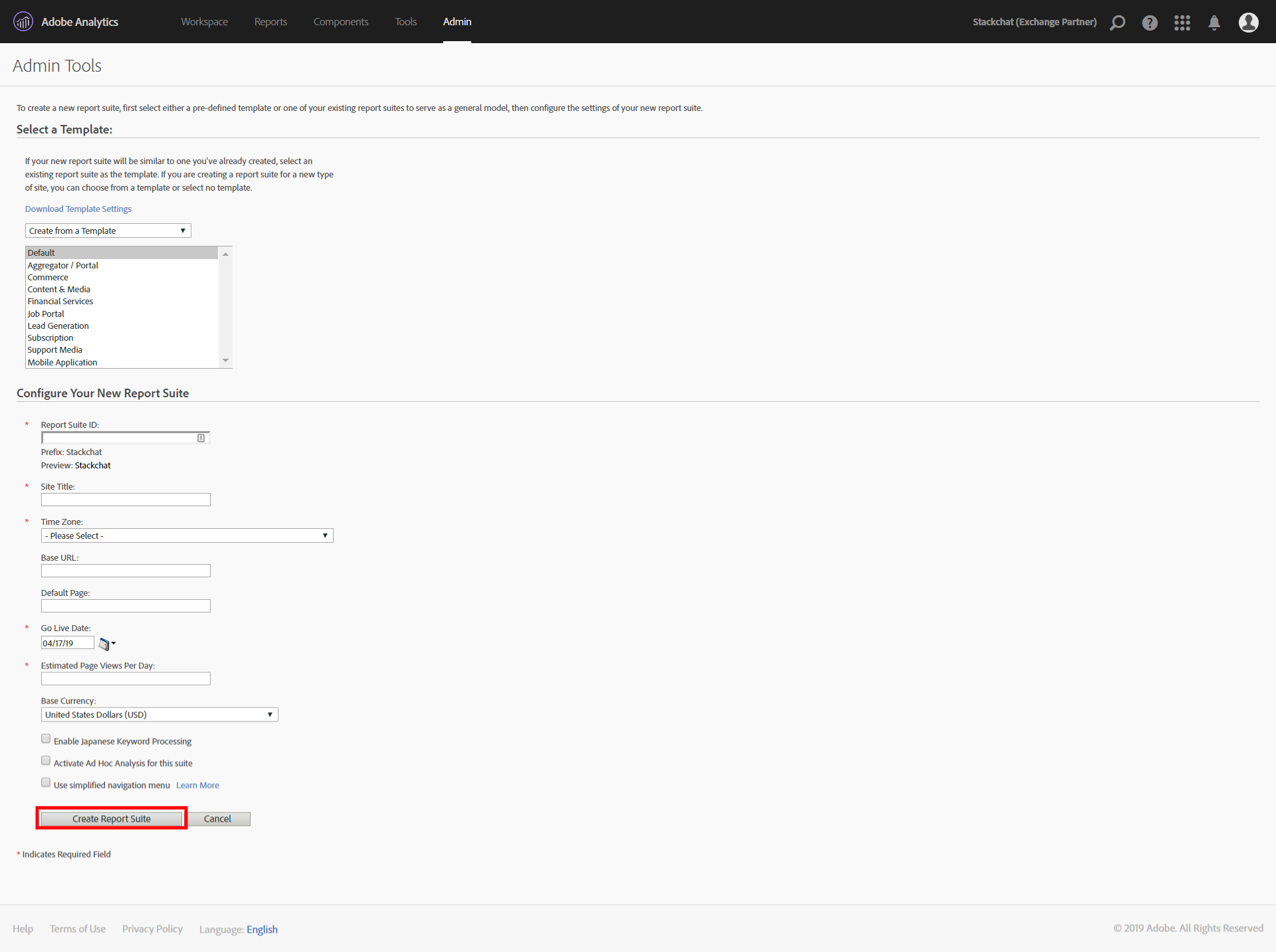
Click Create Report Suite. It may take some time for your new Report Suite to appear, as they are subject to Adobe approval. Once your suite has appeared, proceed to configure your props.
Configuring Custom Traffic Variables
Stackchat uses Custom Traffic Variables, also called props (s.prop) or property variables to log user chat behaviour.
You are able to configure the mappings between your chatbot data and your Report Suite props/eVars/events in a very granular way using the Mapping tab (which we'll get to eventually).
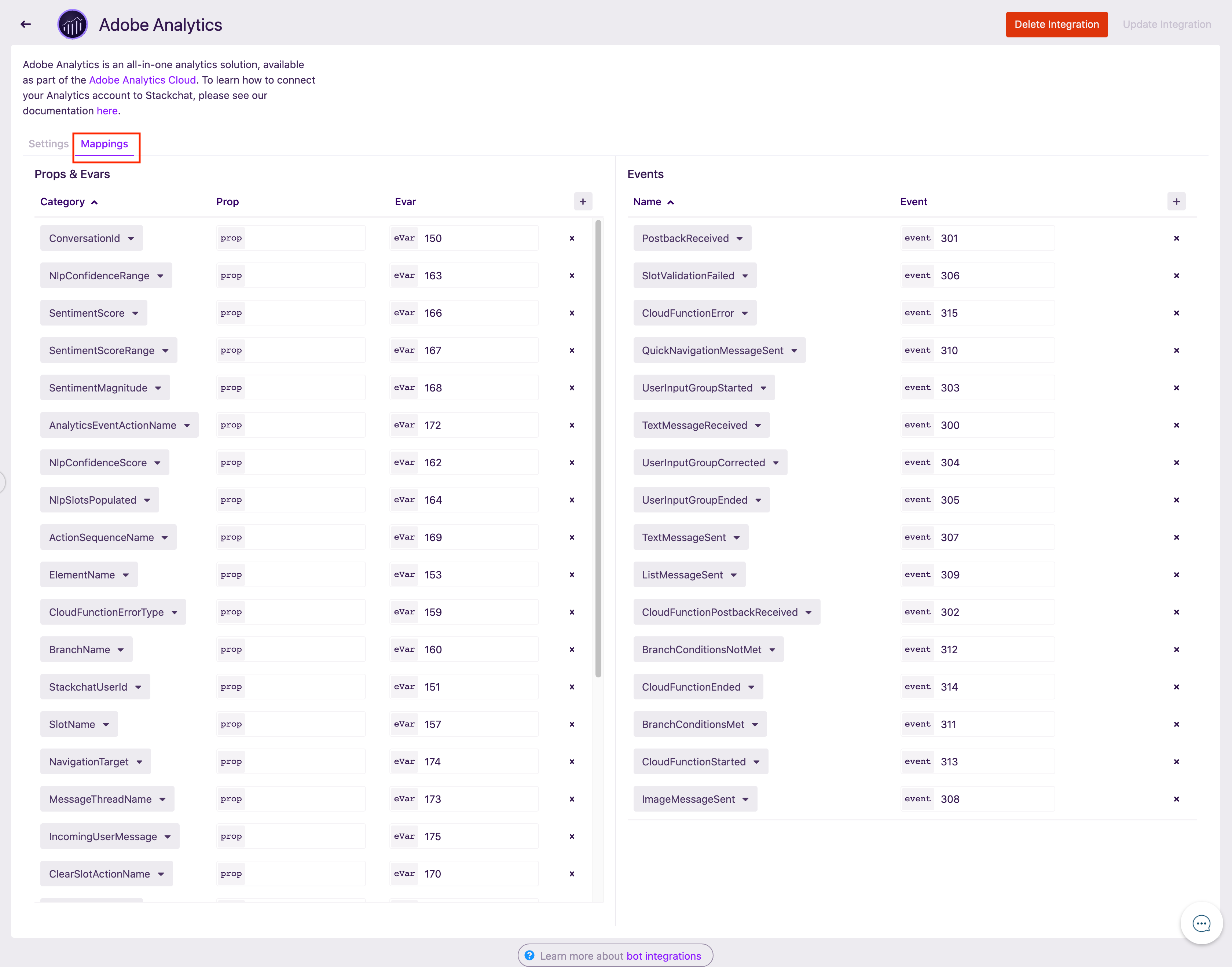
A detailed breakdown of the props, eVars and events that Stackchat uses is available here. Needless to say, you must make sure your Report Suite configuration in Adobe Analytics aligns with your cloud configuration settings in Stackchat.
First we need to enable and name the props used by Stackchat. Inside Adobe Analytics, use the top navigation to go to Admin > Report Suites. Find the Edit Settings button and go to Traffic > Traffic Variables.
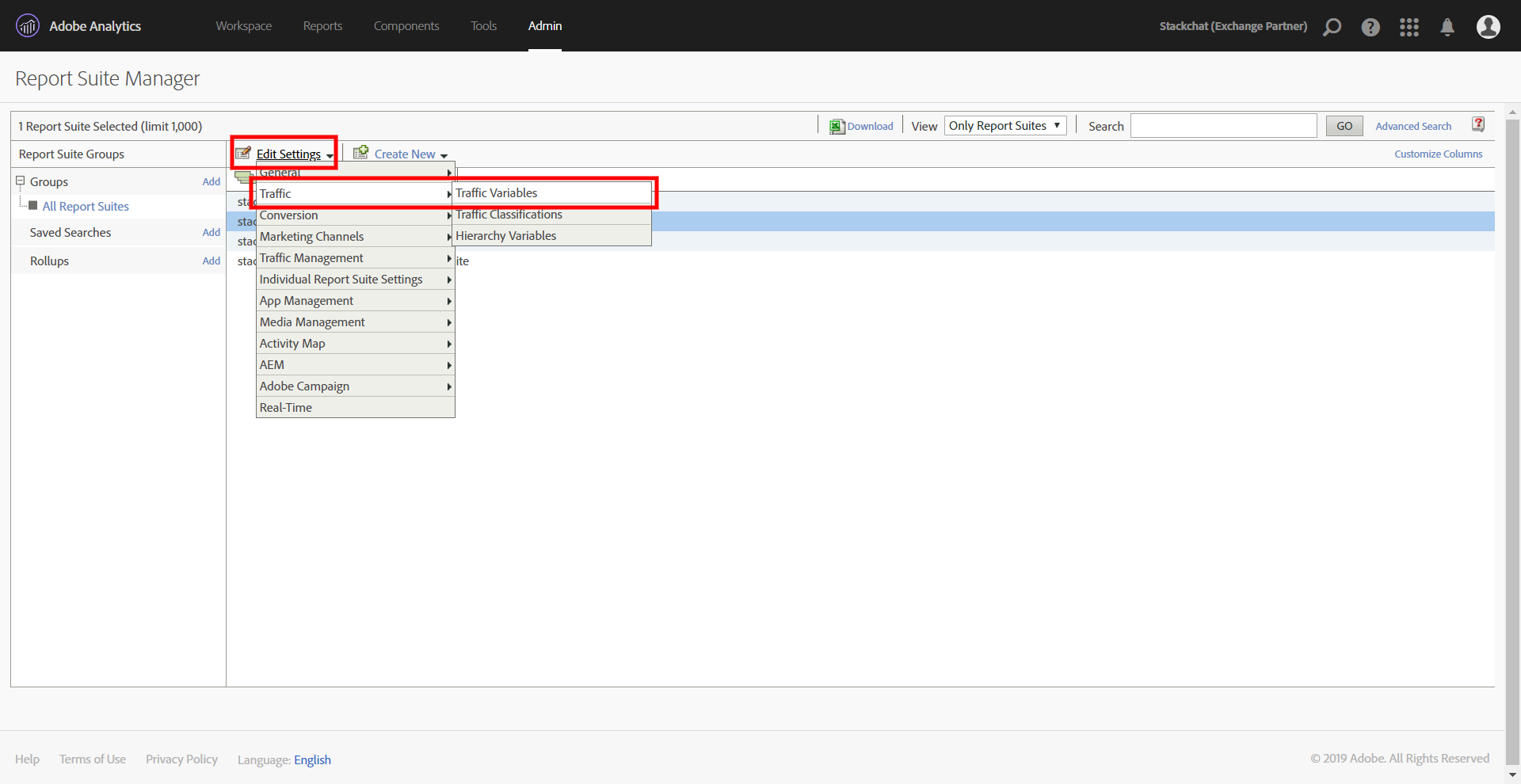
Now create props that map to the Stackchat data mappings. Be sure to enable List Support for those data points that support it. Below is an example of how you may want to map the Stackchat data points into your report suite.
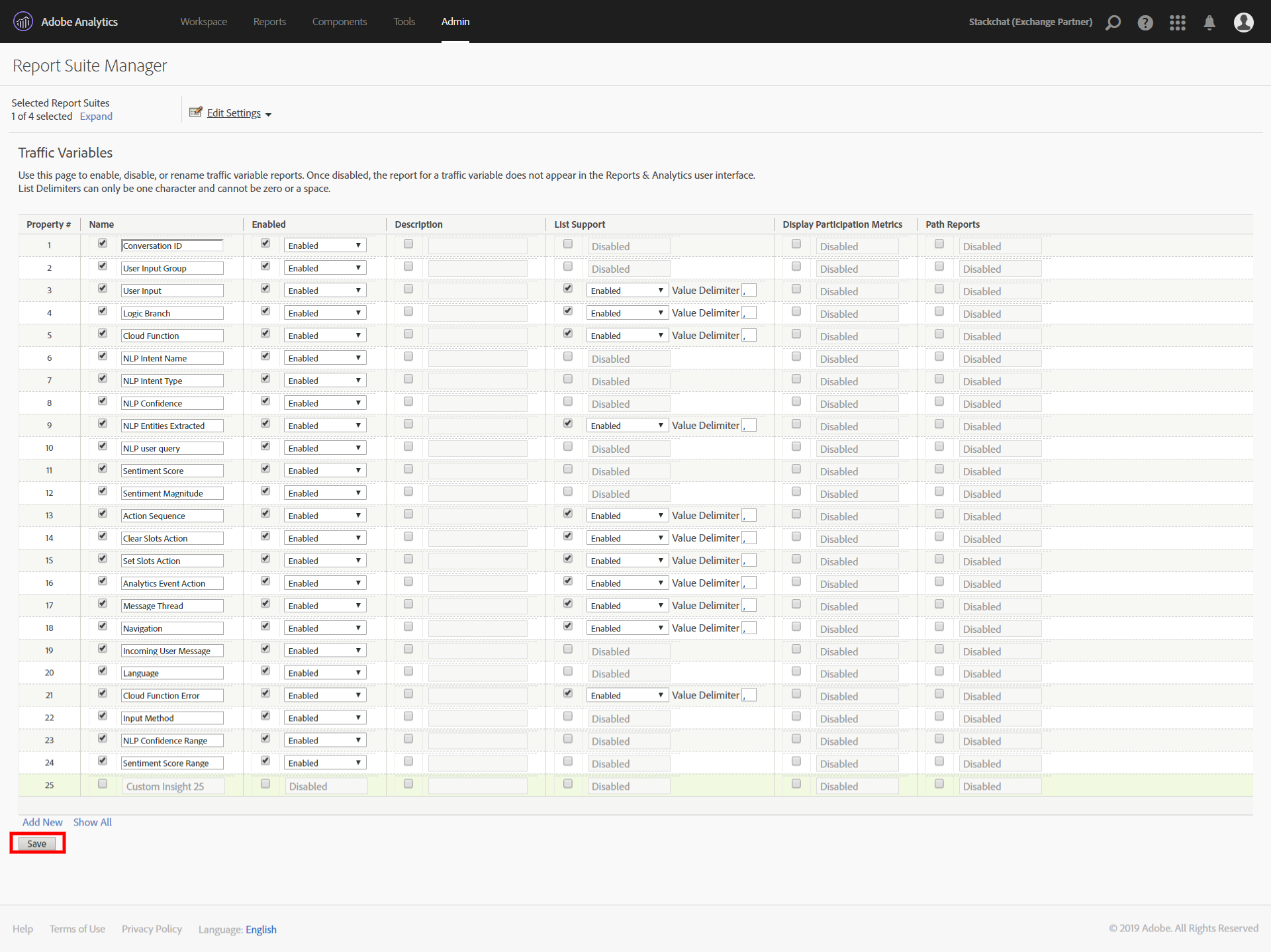
Click the Save button to complete prop configuration.
If a modal is displayed warning about list support changing the way data is processed, just hit "OK" - this is normal.
Configuring Conversion Variables
Conversion Variables (eVars) are used to track user behaviour within the conversation engine. We can use these to understand how many times a Logic Branch resolves as "true" vs "false" or how many times a User Input Group was started and then actually completed.
eVars need to be set in a manner similar to Props. Return to the Report Suite Manager in Adobe Analytics by going to Admin > Report Suites in the main navigation. Then go to Edit Settings > Conversion > Conversion Variables.
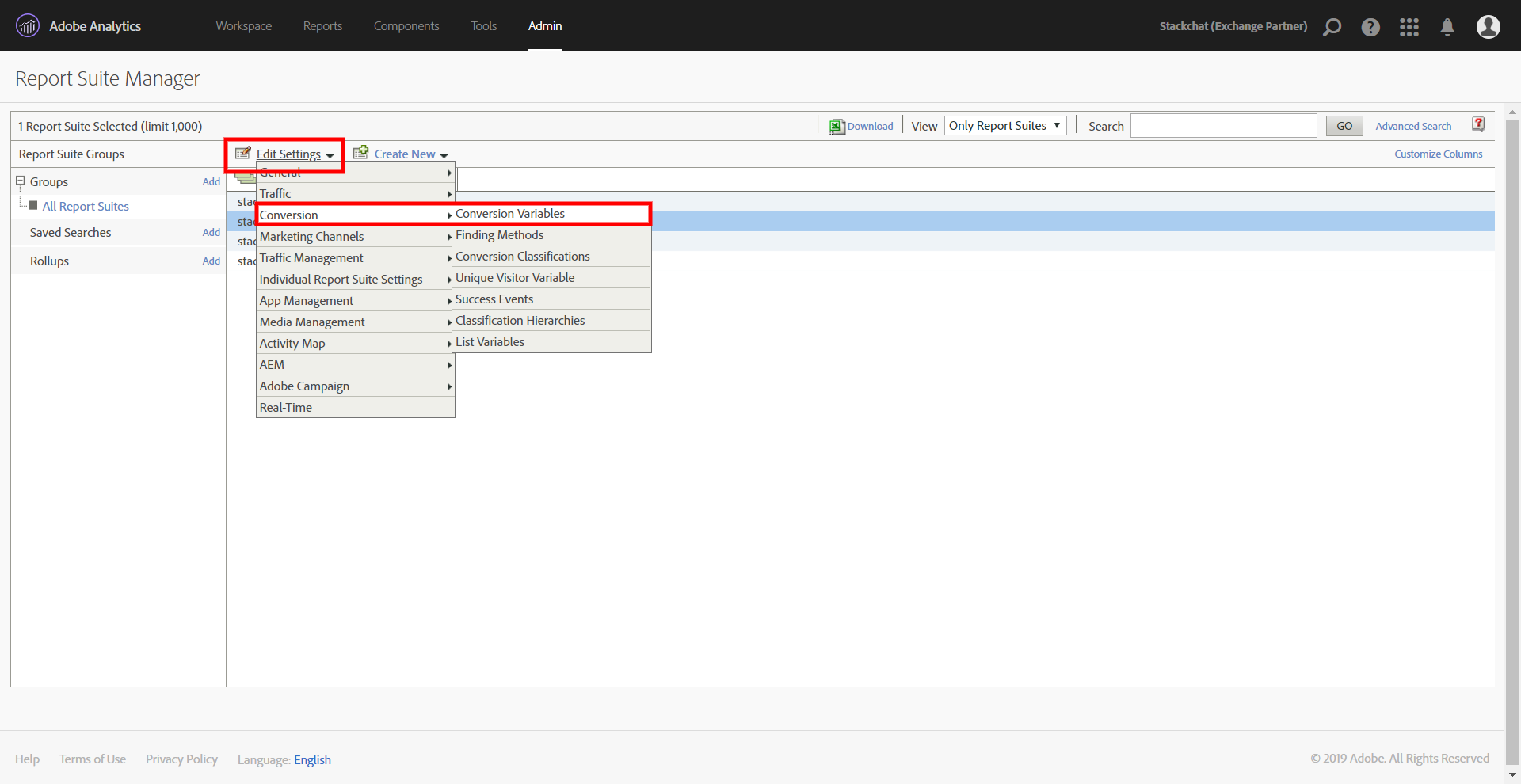
Create eVars that map to the Stackchat data mappings.
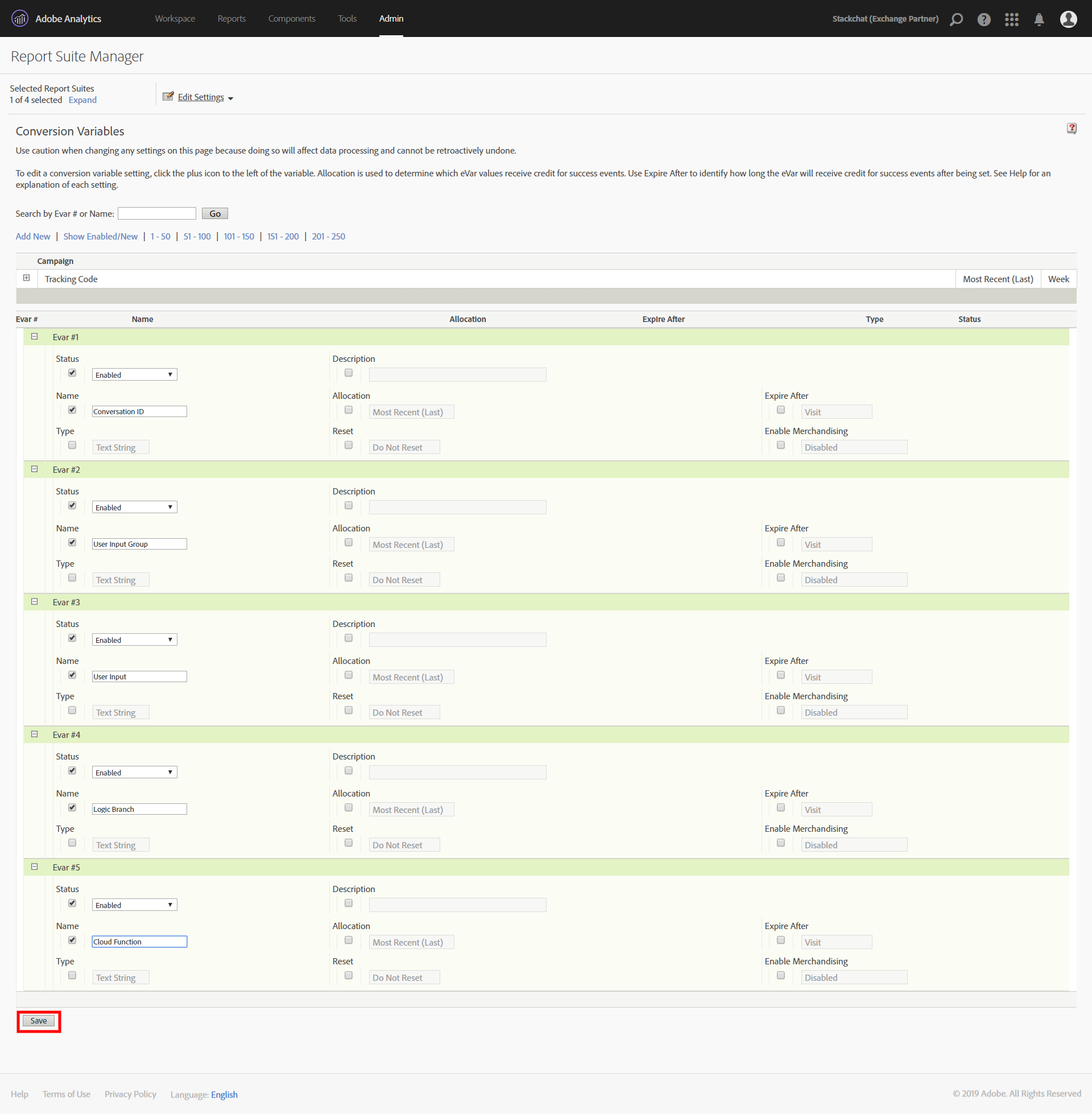
Click the Save button to complete configuration of eVars.
If you see the modal below, just click OK.
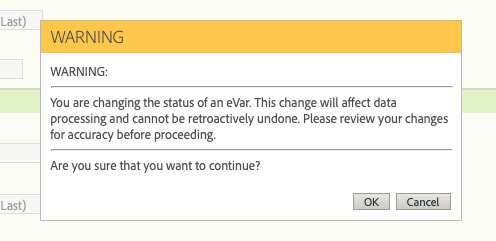
Configuring Custom Success Events
Events are sent for many actions in the conversation engine and are used in conjunction with eVars (Conversion Variables) to track user behavior. They provide the different states that to which our eVars can resolve.
Still in the Report Suite Manager found at Admin > Report Suites in Adobe Analytics, go to Edit Settings > Conversion > Success Events.
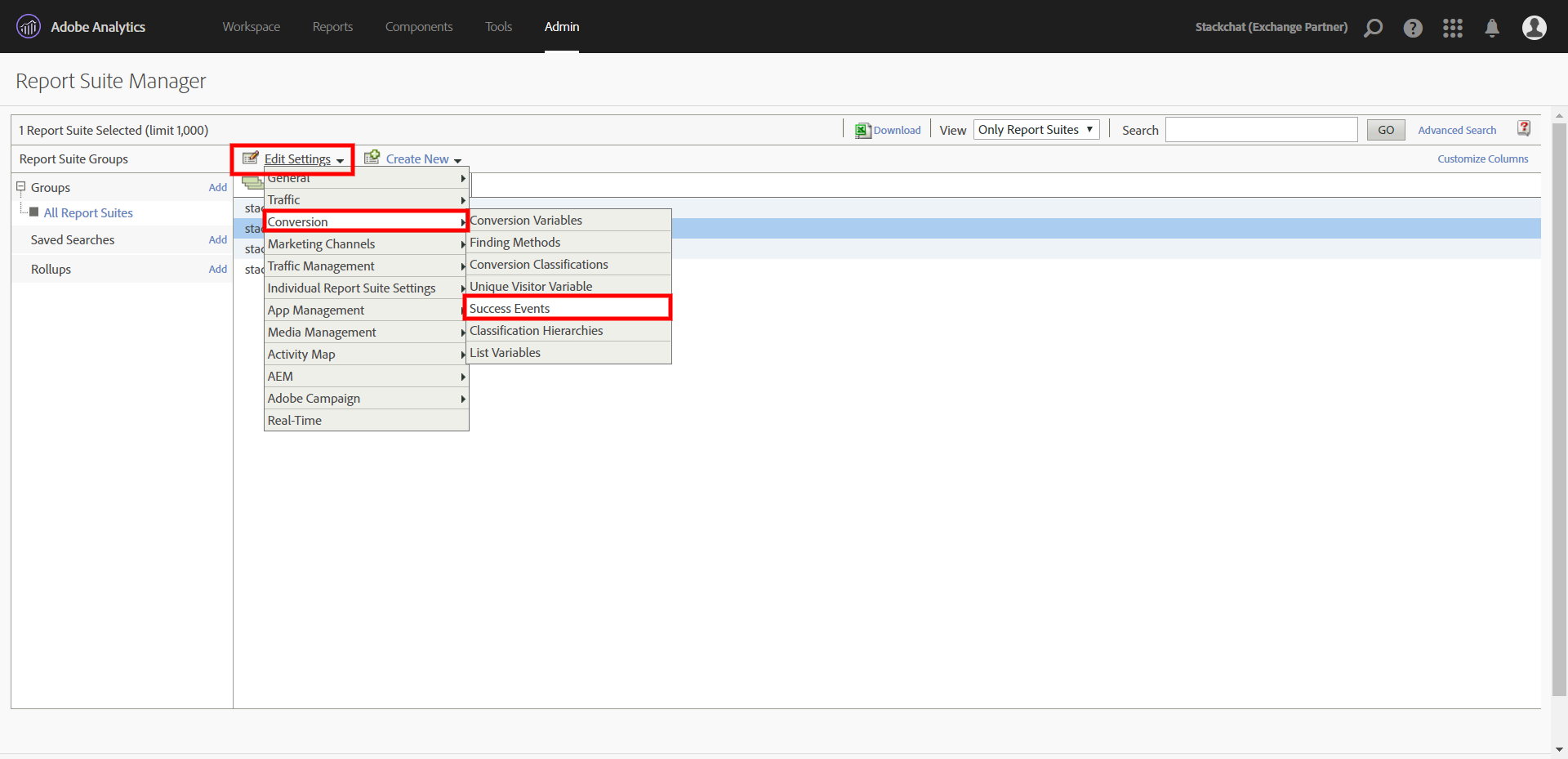
Now create events that map to the events defined in the Stackchat data mappings. All events you created should be of type "counter".
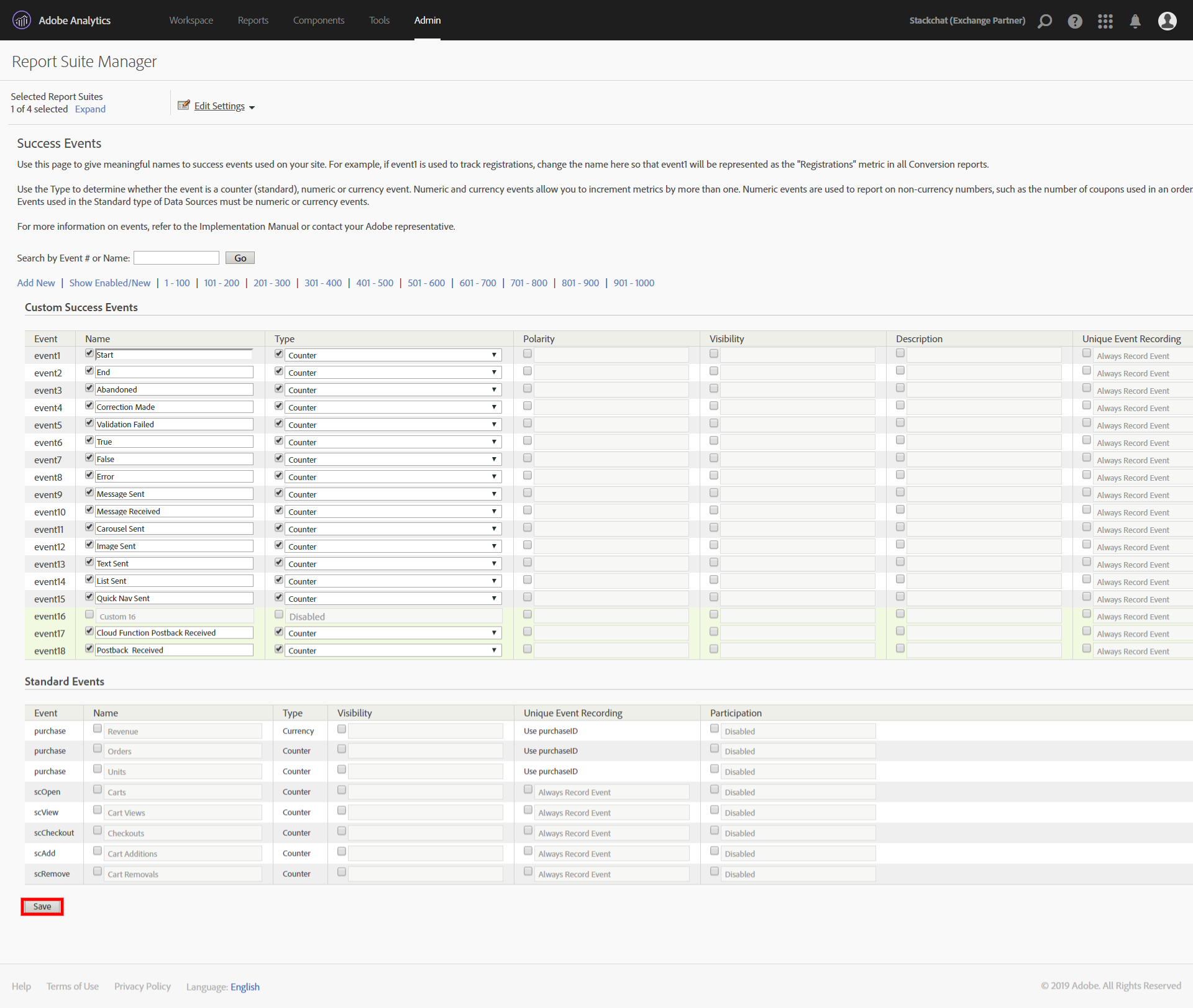
Click Save to complete configuration of Success Events.
You may see the modal below. Just click OK and continue on your way.

At this point, you should have configured all Custom Traffic Variables, Conversion Variables, and Success Events, and Adobe Analytics is ready to accept your data.